Twillingate is known as the iceberg capital of the world and is a popular stop for road trips across Newfoundland. Located on a pair of rocky islands in the center of the province, this tiny town is full of history, culture, hiking trails, and yes, icebergs. I’ve been there twice, so I’ve got lots of picks for things to do in Twillingate.
Along with Trinity and Bonavista, Twillingate is one of the most popular old fishing towns to visit in Newfoundland. However, unlike the former two, Twillingate has a different feel. I think geography plays a big part in that – the town sits at the edge of an archipelago of tiny islands that was dotted with tiny water-access-only fishing villages before roads were built in the 1950s and 60s.
The landscape is also more rugged and windswept in Twillingate. There are fewer trees and more areas of barren open coast. I find so much beauty in the jagged landscape. It’s also easy to explore since there are so many hiking trails here. I actually spent most of my last visit to Twillingate hiking!
This guide to things to do in Twillingate, Newfoundland includes:
- Twillingate Basics: How to get there? How long to spend? Best time to go? What’s the weather like? And lots more.
- Map of Twillingate that includes all the places I mention in this post.
- Best things to do in Twillingate: An iconic lighthouse, icebergs, hikes, historic buildings, and lots more.
- Where to stay in Twillingate: My picks for the best hotels and B&Bs.
Planning a trip to Newfoundland? I’ve got a big list of the best things to do Newfoundland plus lots of travel tips for the province.
This is a sensitive wilderness area. Learn how to Leave No Trace to keep the wilderness wild. Make sure you are prepared by bringing the 10 Essentials. Get ready for adventure with this checklist of things to do before every hike.
Hey there: Some of the links in this post are affiliate links, which means I earn a small commission at no cost to you. Thanks for your support. -Taryn
Twillingate Basics
How to Get to Twillingate
Twillingate is located right in the middle of Newfoundland’s north coast. The town is split between North and South Twillingate Islands, which themselves are part of a larger group of islands separated by winding channels and connected by bridges and causeways.
If you’re flying in, Gander is the closest airport at 1.5 hours away by car. St. John’s is a 5-hour drive and Corner Brook is a 4.5 drive. Since it is right in the middle, Twillingate is a great stop on a Newfoundland road trip.
There is no public transportation to Twillingate so you will need to rent a car in Gander, St. John’s, or Corner Brook. You will also want to have a car to get around in Twillingate since most attractions are not within walking distance.
How Long to Spend in Twillingate
I recommend spending at least one day in Twillingate. Since it is a long drive to get there, it makes the most sense to stay overnight. If you are a keen hiker, I would recommend an extra day since Twillingate has some of the best hikes in Newfoundland.
Twillingate is also a great place to stop for the day if you are planning to visit nearby Fogo Island, one of my favourite places in Newfoundland.
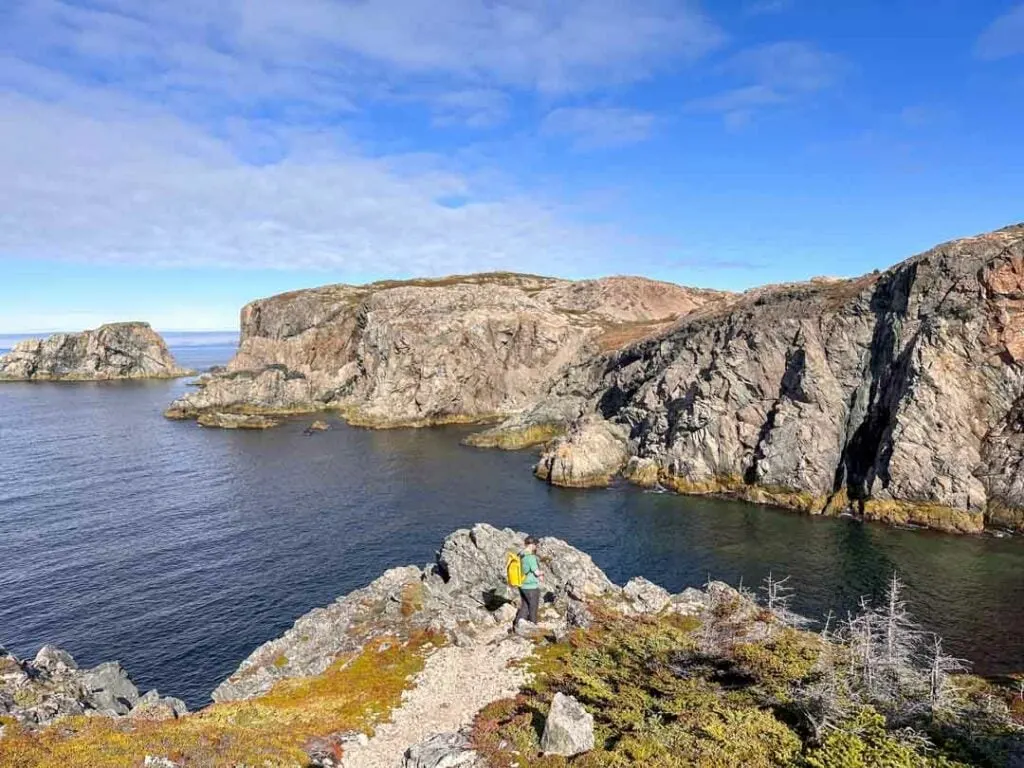
Best Time to Go to Twillingate
Summer is the best time to visit Newfoundland, so I recommend going to Twillingate between May and late September. The weather is the warmest and dries at this time of year. It’s also a great time to see whales. If you want to see icebergs, plan your visit for May and June (although icebergs are possible later in the summer too).
If you plan to visit in May, June, or September, check the opening hours of businesses. Most places will be open but may be running at reduced hours until the summer rush in July and August. We visited in early June and a few places were just opening up for summer.
Twillingate Weather
While the summer months are the warmest and sunniest, this is still Newfoundland. Prepare for rain and fog at any time. Pack a rain jacket and a warm jacket like a fleece or lightweight puffy jacket, just in case.
Typical summer temperatures in June, July, and August are between 10 and 20°C (50 to 68°F). Since Twillingate is in the north along the ocean, it also is often very windy, so it can feel colder than it actually is.
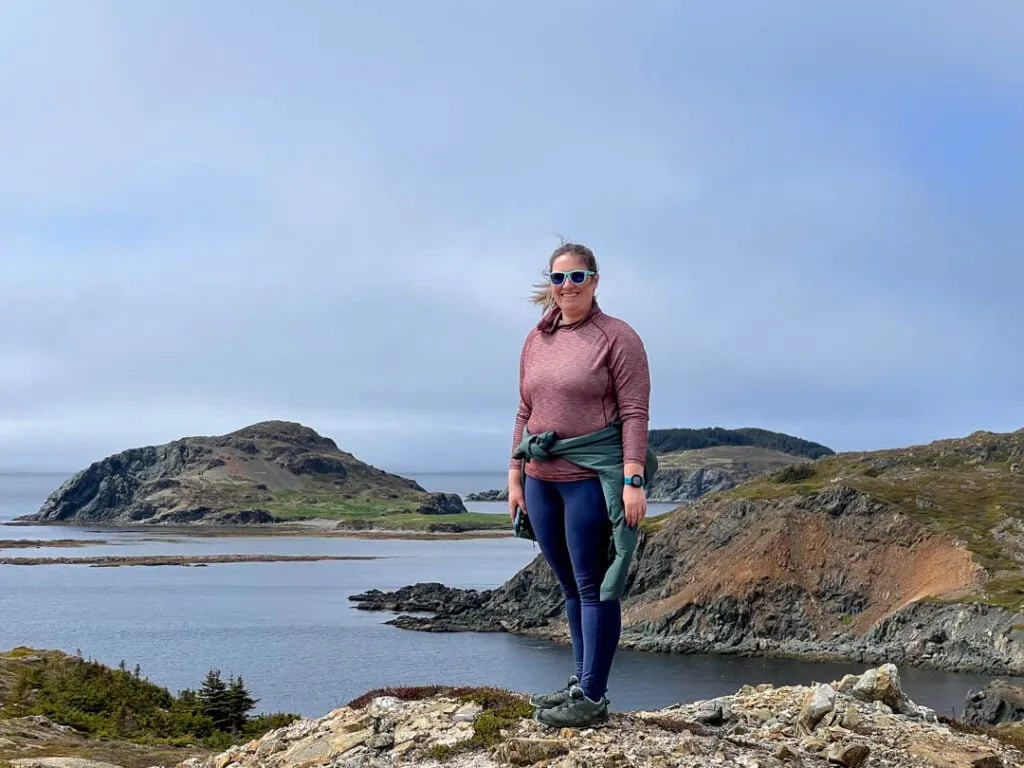
History of Twillingate
Twillingate is the traditional territory of the Beothuk and Mi’kma’ki. English fishermen first settled in the area in the 17th century. Twillingate’s location was an important trading centre for the northern shore and Labrador cod fisheries, so the town prospered.
When the cod fishing moratorium came into effect in 1992, the economy of Twillingate suffered, just like almost every other fishing town in Newfoundland. Over the years, Twillingate has pivoted to focus on tourism, capitalizing on its reputation as the iceberg capital of the world.
Twillingate Map
To help you find your way around, I made this custom Google Map of Twillingate for you. It includes every single place I mention in this post.
Best Things To Do in Twillingate
Explore the Town
The Twillingate area is quite spread out since it includes several small fishing villages in tiny coves. But the main part of the town is clustered around the bridge over Shoal Tickle that separates North Twillingate Island from South Twillingate Island. There are great views from the bridge as well as various places along the waterfront.
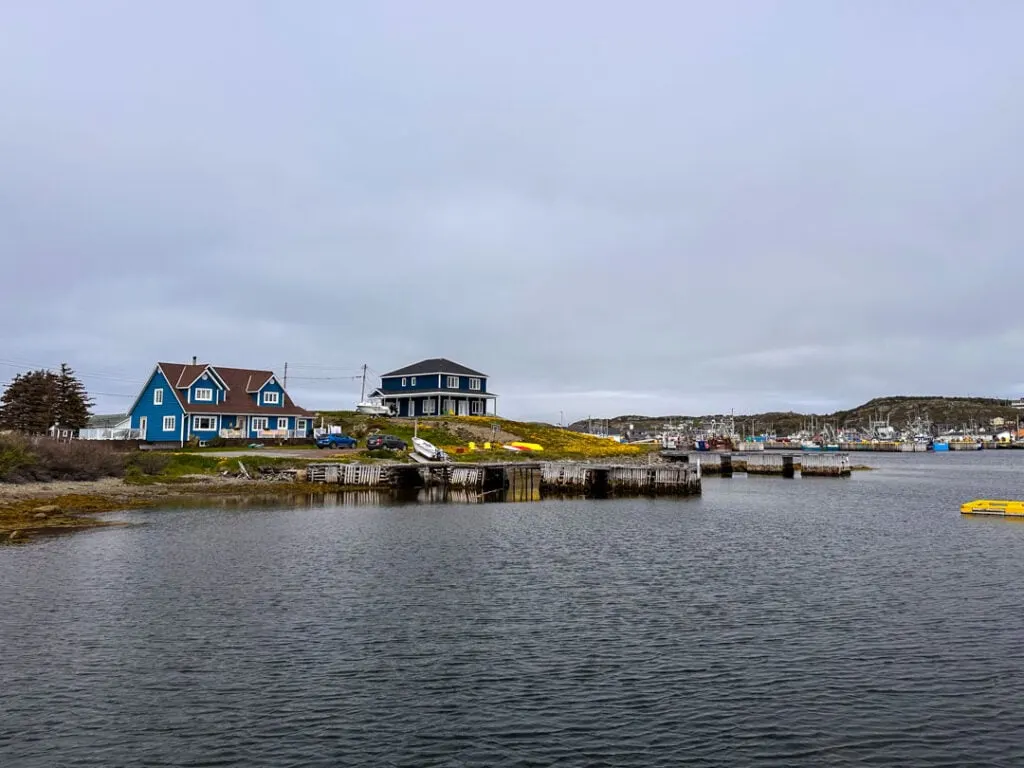
It’s worth wandering along Main Street on North Twillingate to check out some of the local shops. Artisan Market near the bridge was my favourite. It has tons of local quilts, art, books, jewelry, and housewares. They also sell Twillingate Rockcut Trails merch, and as avid hikers, we had to get a hat.
Other good galleries include the Ted Stuckless Driftwood Gallery, Scot’s Pencil Art, and the Twillingate Museum and Craft Shop. They are all on Main Street. Scot’s Pencil Art also has a giant lobster trap you can climb inside for a fun photo op.
Unlike Trinity or Bonavista, Twillingate has only a couple of notable historic buildings. The Masonic Hall on the south side of the bridge and Saint Peter’s Anglican Church are both worth a look. But otherwise, I found that the most interesting part about Twillingate was not the history, but the present.

In some other tourist-focused Newfoundland towns things felt too carefully restored and sanitized (I’m looking at you Trinity), but in Twillingate, things felt more real. People actually live and work here. It was interesting to see the subtle ways that Newfoundland culture is different than the rest of Canada.
One stand-out in Newfoundland culture is the root cellars, dug into the sides of hills to store perishables before refrigeration. While Elliston near Bonavista may call itself the root cellar capital, Twillingate is not far behind, with over 230 root cellars dotting the community.
Long Point Lighthouse
The historic Long Point Lighthouse sits on the northern tip of North Twillingate Island 10 minutes drive from the town of Twilingate. It’s a prominent landmark that you can see from kilometres away – we spotted it from Fogo Island in the east and Brighton in the west.
Built in 1876, the lighthouse still has one lighthouse keeper to manage the light, horns, and associated instruments. The lighthouse still provides guidance for the local fishing fleet. There are exhibits inside about the history of Twillingate and you can also take a tour. The gift shop near the parking lot has the usual souvenirs, but they also sell fudge.
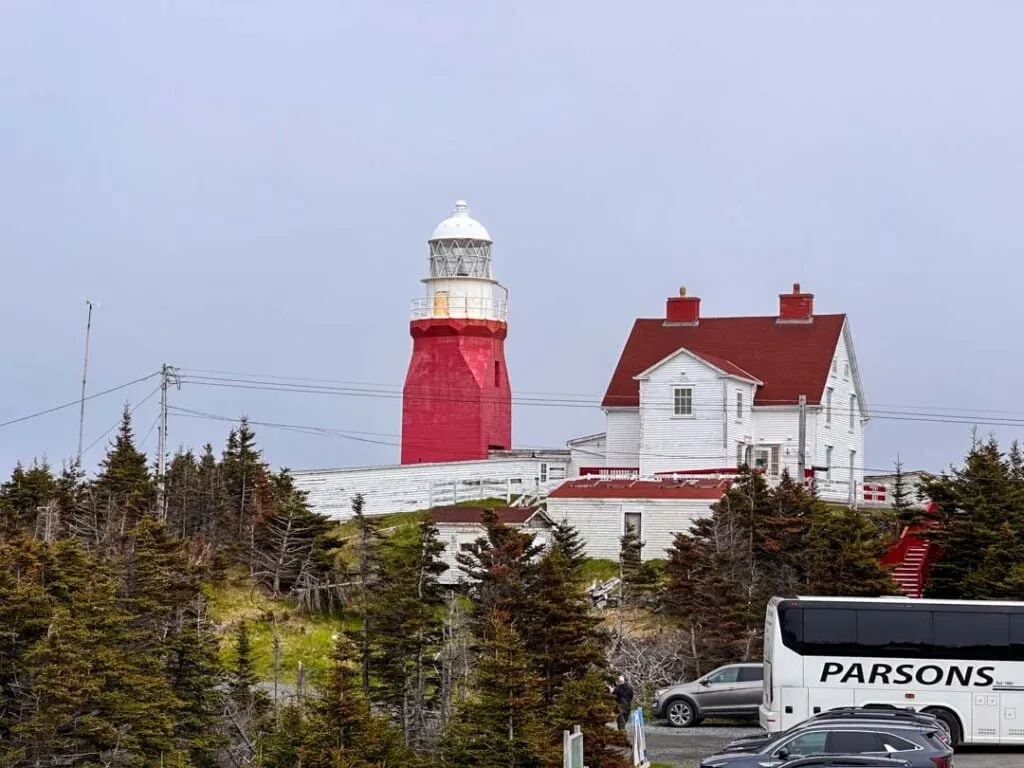
The views from the lookout platform next to the parking area are spectacular. You can look 300 feet down the rocky shoreline below, west along the craggy coastline and north to the open Atlantic Ocean. If you’re lucky (I wasn’t) you can also spot icebergs and whales.

Be sure to stop at the Crow’s Nest Cafe for coffee and a snack on the way back. It is located in the village of Crow Head on the drive to or from the lighthouse.
Nanny’s Hole Hike
Long Point Lighthouse is also the start of several great hiking trails. If you want a short hike, try the hike to Nanny’s Hole – it’s one of my picks for the best hikes in Newfoundland. The trail starts at the Long Point Lighthouse Parking lot.
The path takes you along the top of a rocky bluff with several viewpoints and then steeply down the slope with the help of sets of wooden stairs. At the bottom, you can stroll through meadows and along the headland out to the coast to Nanny’s Hole, a roiling cauldron of seawater trapped between narrow fingers of rock.
If you want to venture further, you can follow the trail south to Sleepy Cove and then to the village of Crow Head.
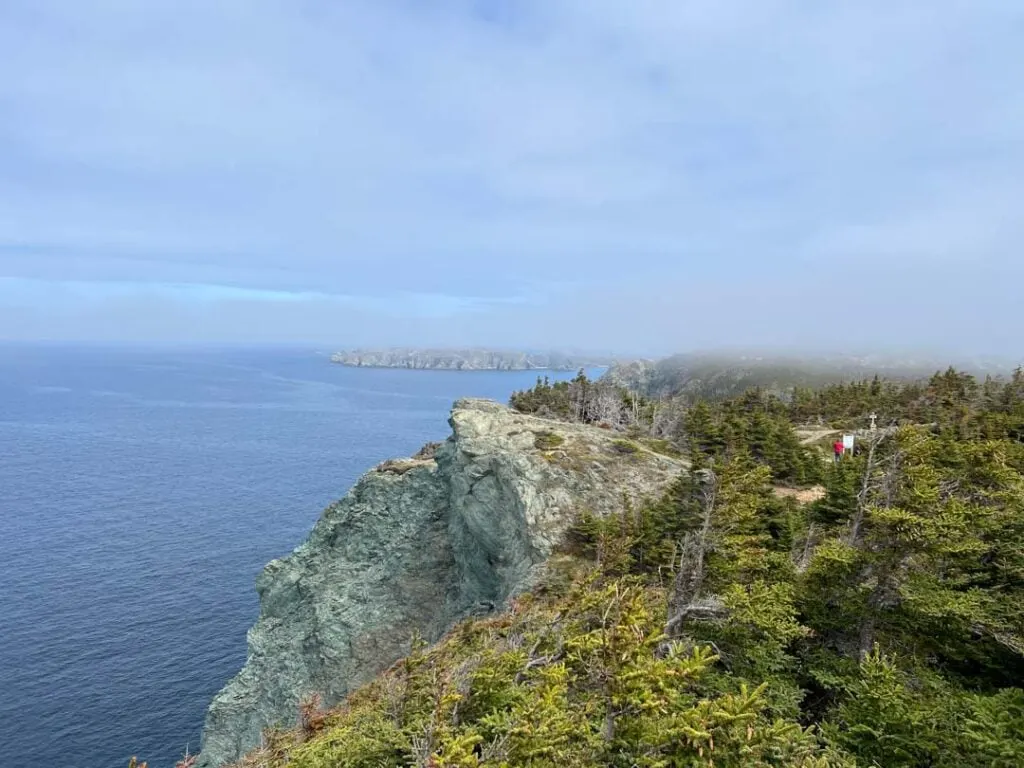
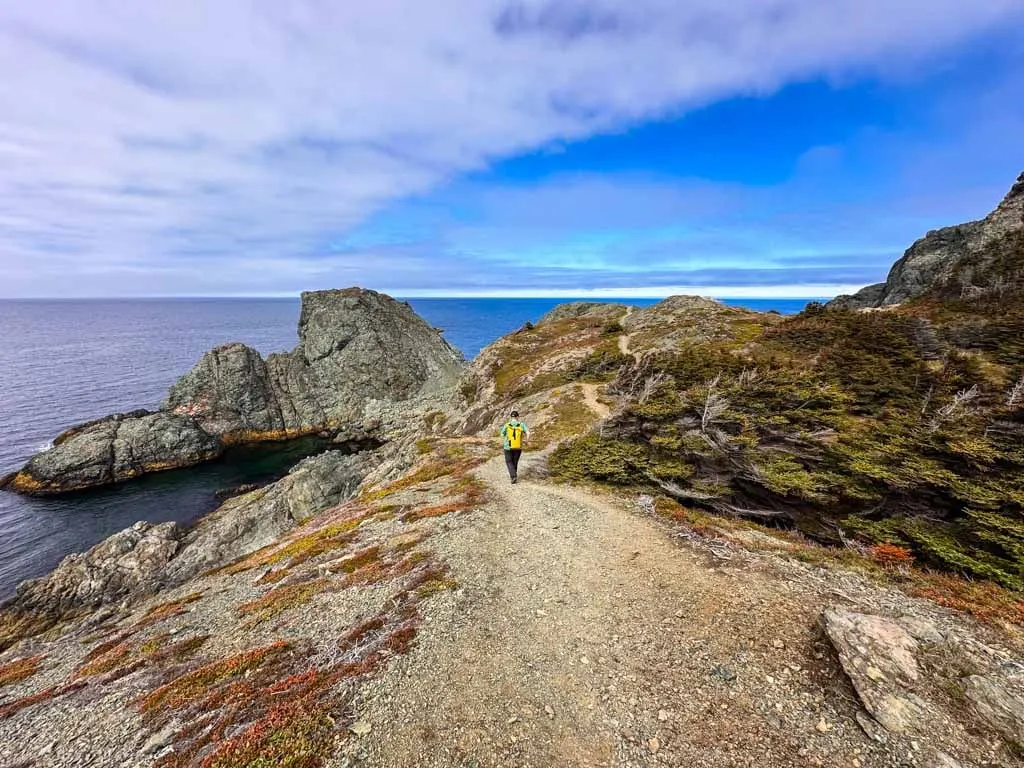
Look for Icebergs
Twillingate is known as the iceberg capital of the world. You can often see icebergs from land (especially at Long Point Lighthouse), but the best way to see them up close is to take an iceberg boat tour.
For the best chances of seeing an iceberg, visit in May and June. But it is still possible to see bergs later in the season. Even if there are no icebergs around, you can usually see whales and sea birds from the boat tours.
Tragically, there were no icebergs in Twillingate on either of my visits. The first time it was late August and they were gone for the season. The second time it was early June but it was a weird year and there were no icebergs in Twilingate. Despite my bad luck, Twillingate is still the best place to see icebergs in Newfoundland… just not for me. (I did see an iceberg in the tiny town of Brighton though! It’s in the photo below.)
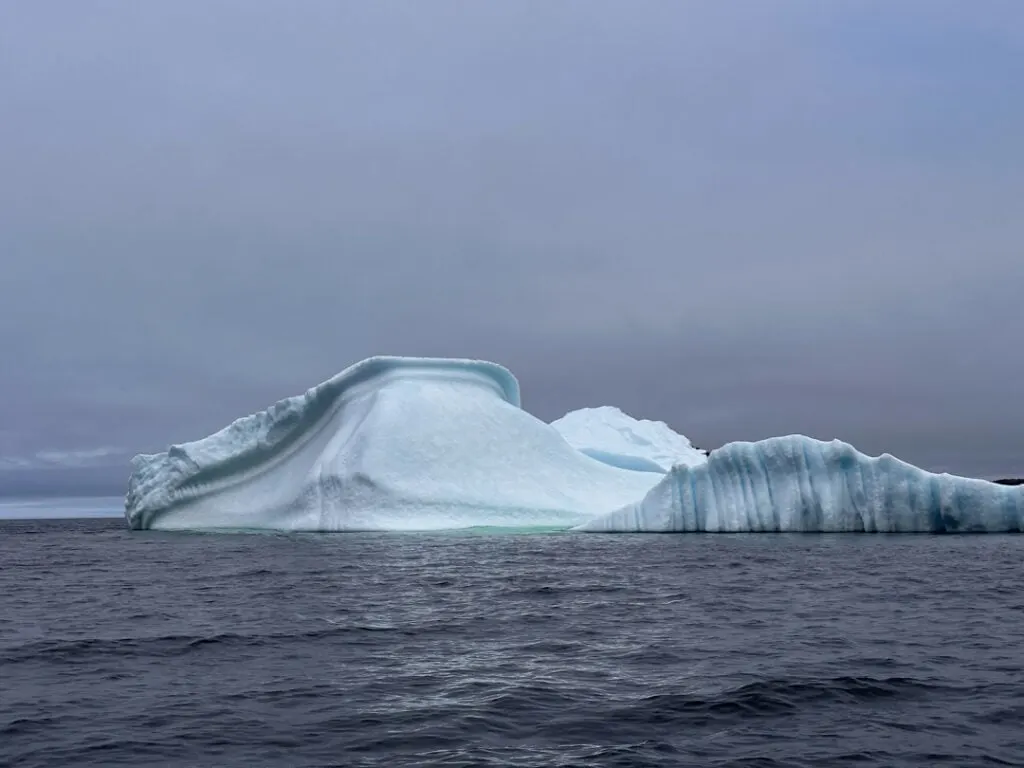
Smith’s Lookout
We stumbled on Smith’s Lookout by accident and I haven’t seen it recommended anywhere else. But we loved this viewpoint. It’s a short (but steep) 15-minute walk up a gravel path from Smith’s Lookout Road at the north end of Twillingate village.
At the top, there is a fishermen’s memorial and incredible views of the town and Twillingate Harbour. A maze of ATV trails leads away from the summit. We had fun exploring and making our own way back to town. There are no trees in this area, so you can always see where you are going. However, I will caution that there are cliffs and steep slopes, so you have to be careful.

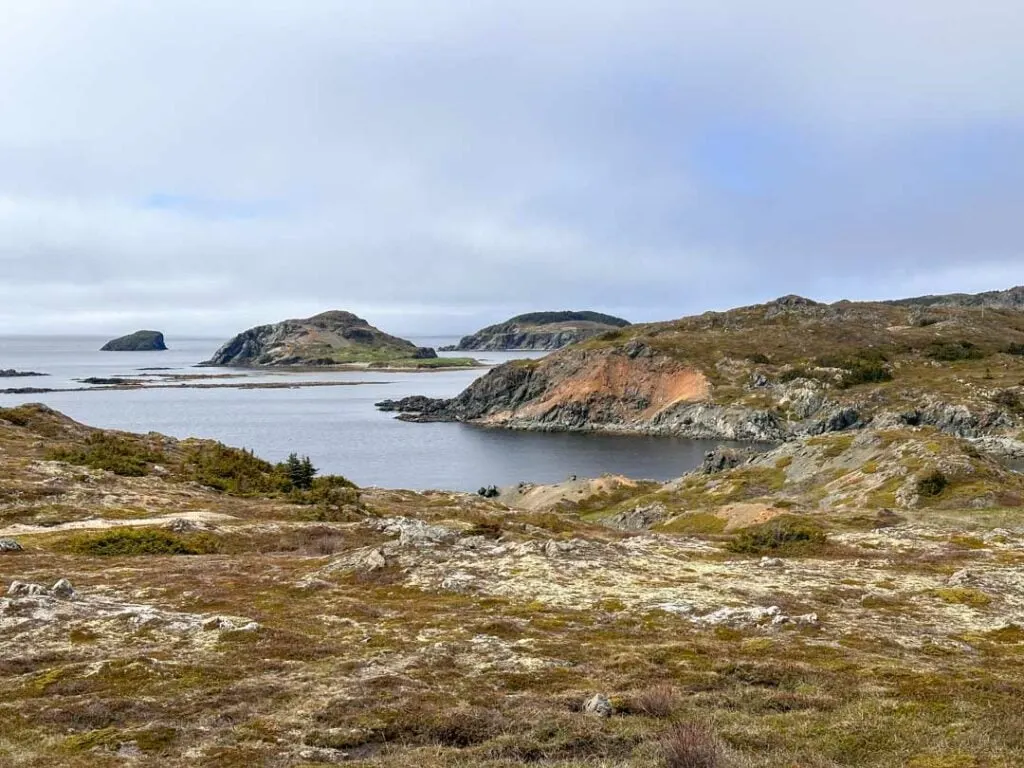
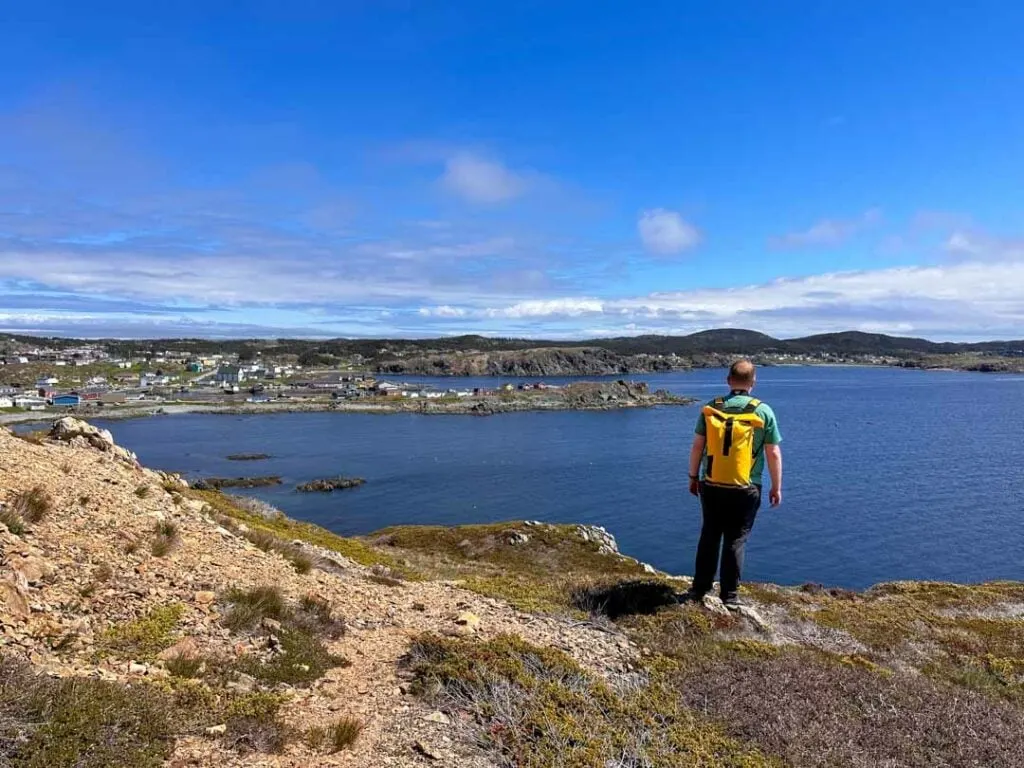
Eat Seafood
Twillingate is a great place to eat fresh seafood. We had an amazing dinner at Annie’s Harbour Restaurant. Their airy dining room has a great view of the harbour. (Which shouldn’t be a surprise with a name like that.)
We had the cod tongues as an appetizer and I loved them. They are a bit like calamari – chewy and deep-fried. The cod and scallops we had for dinner were perfectly cooked. And the Newfoundland-shaped shortbread for dessert was fun too.
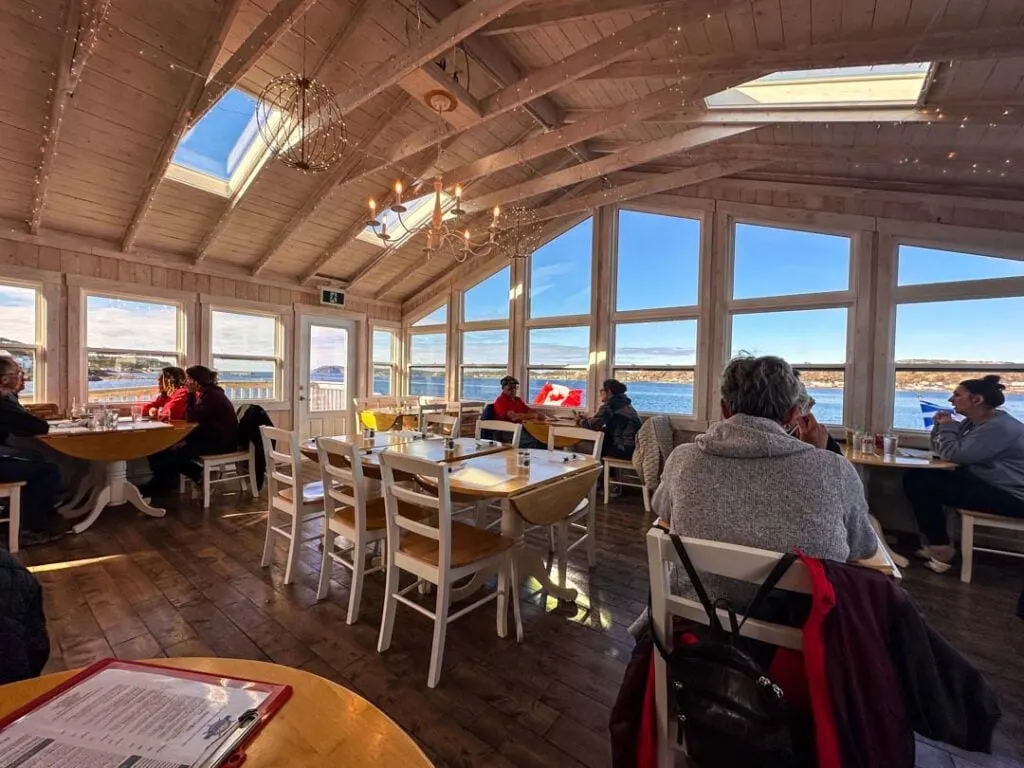
If you are looking to splurge on a lobster dinner, I’ve heard good things about Doyle Sansome and Sons a 15-minute drive away on New World Island. The restaurant is part of the local lobster pool, which is a holding tank for live lobster, so you know what you eat will be really fresh. They also have a gorgeous deck right on the ocean.
The Rockcut Trails
The Rockcut Trails are a set of community-maintained hiking trails on the east side of South Twillingate Island. The network of paths leads out to the coast from several trailheads and there are even some opportunities for backcountry camping.
We loved the hike out to French Head – it made my list of the best hikes in Newfoundland. The trail starts near the village of Durrell on South Twillingate Island at French Beach. From there, it heads out to a series of beautiful viewpoints on a headland. If you want to hike further, you can continue on to Spiller’s Cove or Codjack’s Cove.
The Rockcut Trails organization also maintains several other good trails in the area, including the Top of Twillingate Trail, which goes to a great viewpoint on South Twillingate Island.
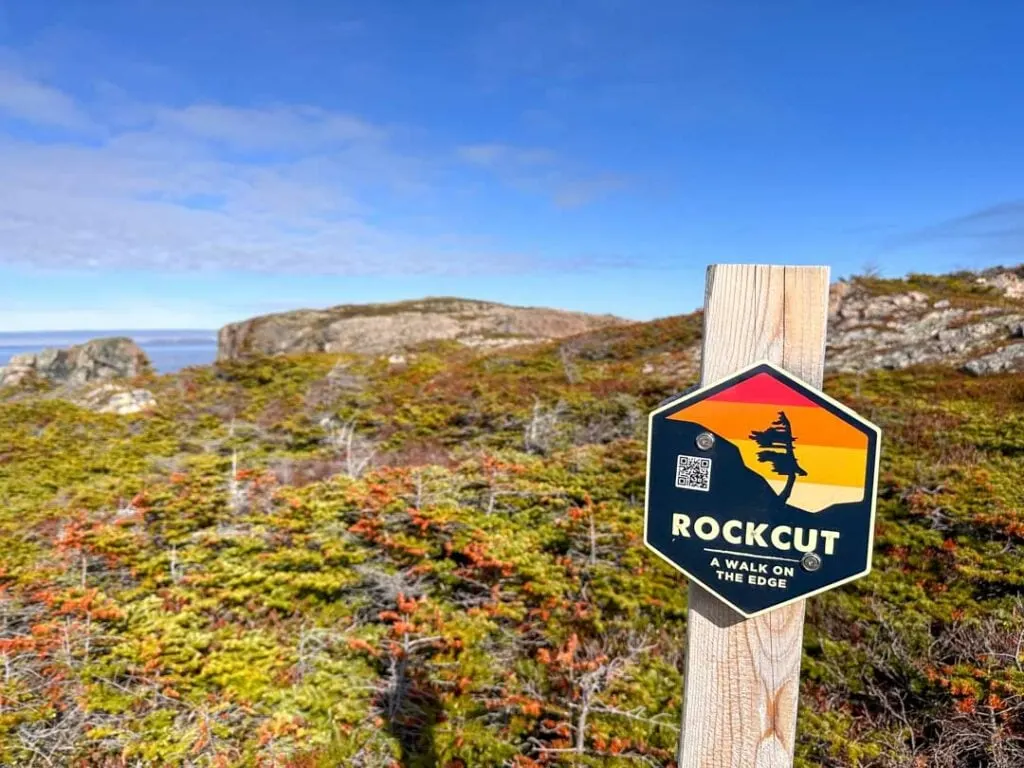
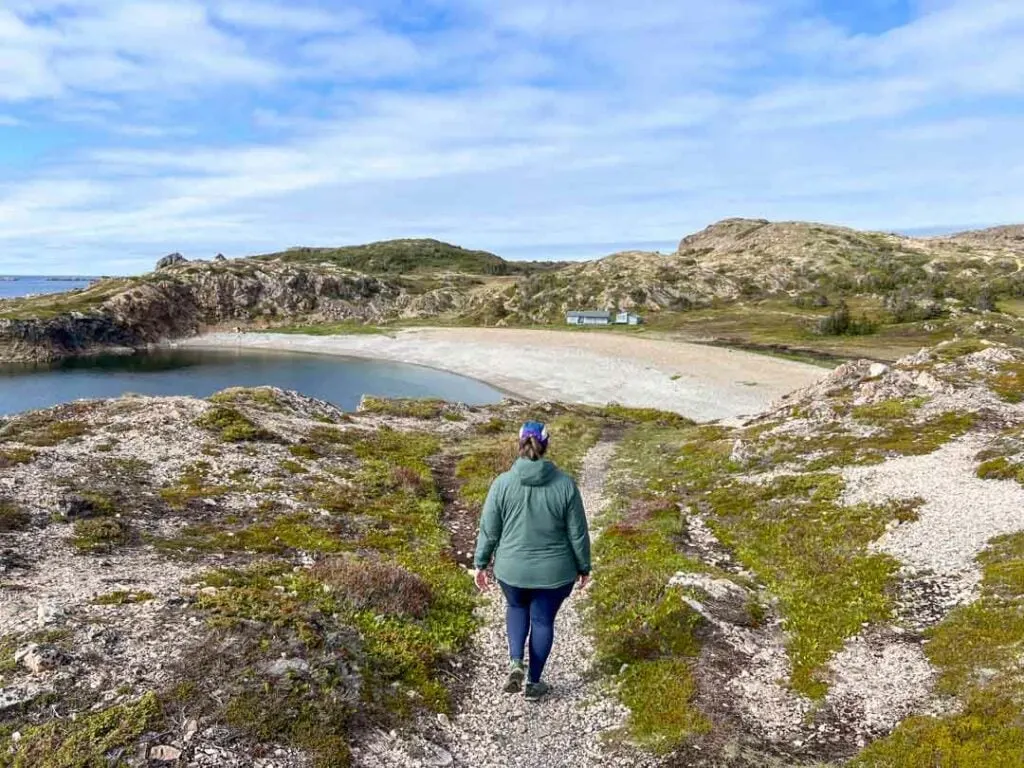
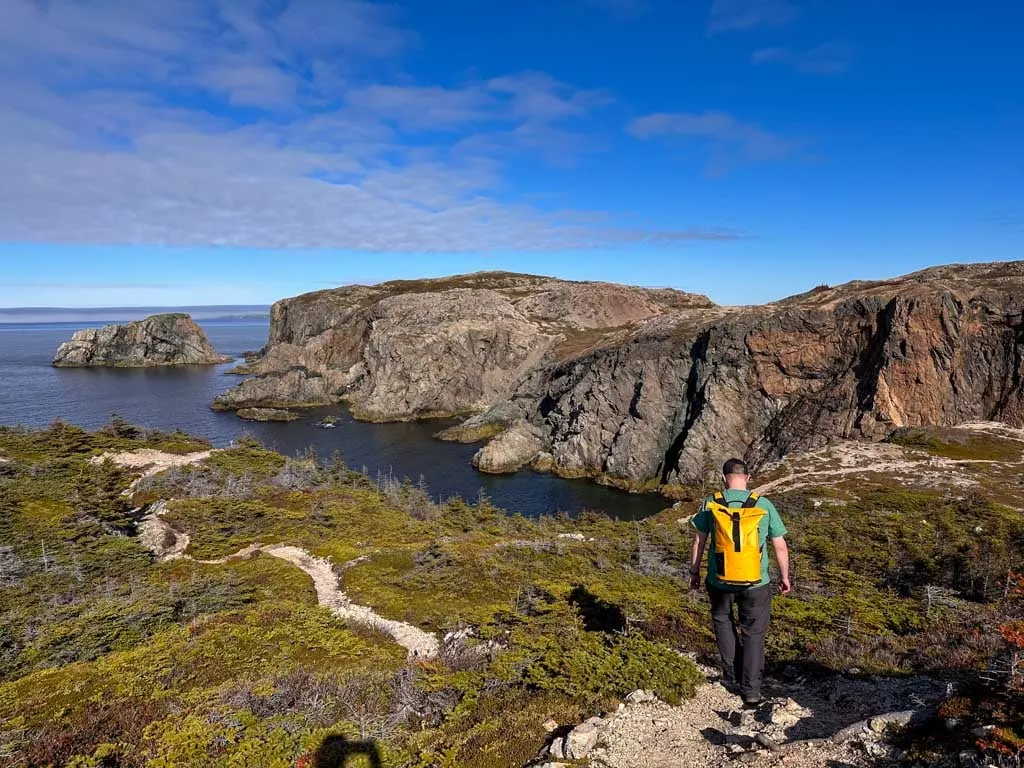
Great Auk Winery
You probably don’t think of wine when you think of Newfoundland, and I didn’t either. It certainly doesn’t have a prime grape-growing climate! But the wines at Great Auk Winery are made with local fruits and berries. They also have cheeky names like “Kiss Me Arse” and “Moose Joose”. The winery is near Durrell, which is a 5-minute drive from Twillingate on South Twillingate Island.
Museums
I’m embarrassed to admit that I didn’t visit any museums when I was in Twillingate. In my defence, the weather was incredible, so I wanted to spend as much time as possible outside on the hiking trails. But Twillingate does have a few museums that sound worthwhile… especially if the weather is less than awesome.
The Isles Wooden Boat Museum has exhibits about the hand-built wooden boats that were once the lifeblood of Newfoundland’s coastal communities. They also have interactive boat-building demonstrations.
Located on the tip of South Twillingate Island, Prime Berth Twillingate Fishery and Heritage Centre is one-part museum and one-part unabashed tourist trap. Owned and operated by local fisherman David Boyd, it includes all kinds of fishing artifacts and memorabilia, whale skeletons, an underwater camera, a gift and snack shop, and tours that focus on fishing or iceberg spotting.
The Beothuk Interpretation Centre is a Provincial Historic Site that has exhibits and displays about the Beothuk, and Indigenous group that died out sometime between the 1800s and early 1900s due to pressures of European settlers and the introduction of infectious diseases. The museum protects a Beothuk village site from 300 years ago. It is located in Boyd’s Cove, about 35 minutes from Twillingate, so I recommend visiting on your way in our out of town.
Fogo Island
If you’re in the Twillingate area, make time to visit Fogo Island. It takes a while to get to via car and then ferry, but I promise you it’s worth it. Fogo is my favourite place in Newfoundland.
The isolated island is an incredible mix of rugged coastal scenery, old fishing villages, hiking trails, and new-school social-enterprise businesses and artist residences. It’s like nowhere else I’ve ever been and I highly encourage you to visit. I’ve got a whole guide to the best things to do on Fogo Island for you to read through.

Where to Stay in Twillingate
We are outdoorsy people and wanted to save some money, so we camped at Dildo Run Provincial Park on our visit to Twillingate. It’s a 20-minute drive from town, has ocean-front campsites, and costs just $27 a night. The suggestively hilarious name is a great bonus. (For context, a dildo is a wooden oar peg and a run is a stretch of water between islands.)
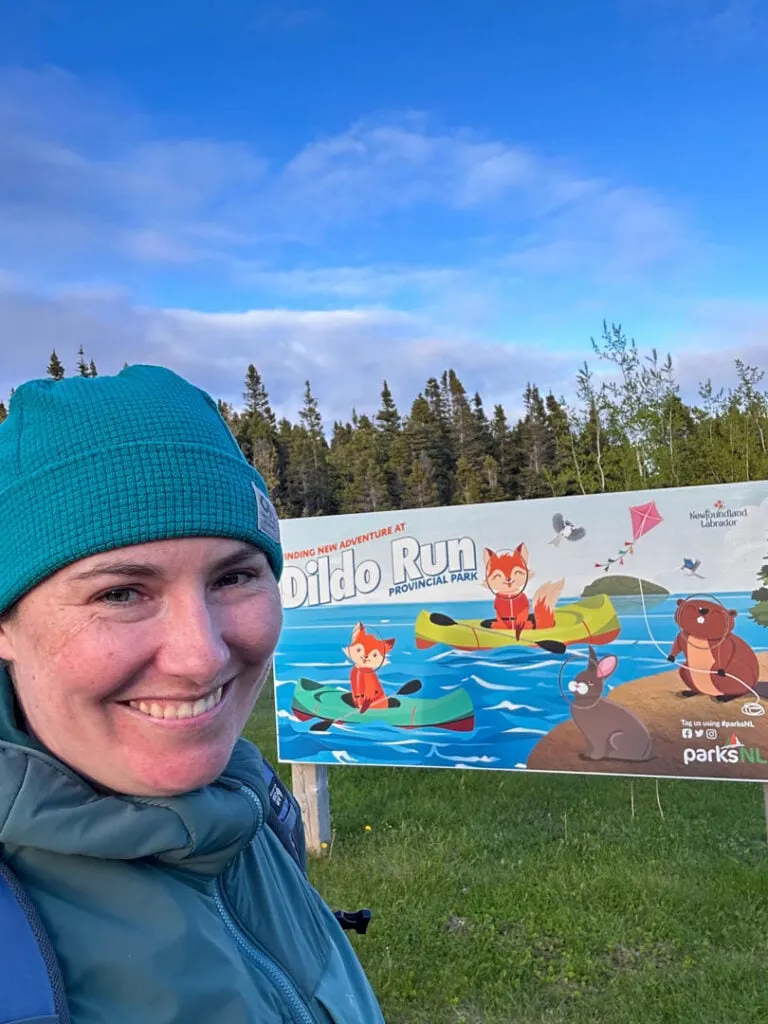
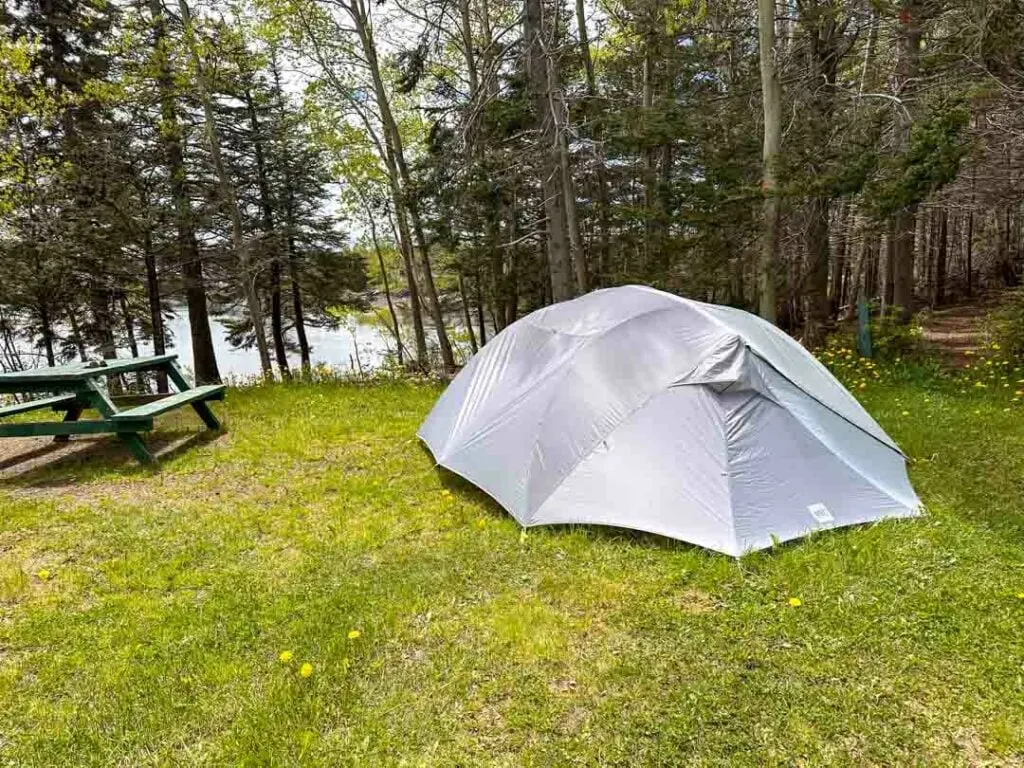
But if you don’t want to sleep in a tent, Twillingate has lots of hotels and vacation rentals. The Toulinguet Inn sits right on the water in South Twillingate. It has private rooms and a great pebble beach.
Or stay at the Anchor Inn right in Twillingate. It has great views from the rooms and the restaurant since it is across the street from the harbour.
There are also tons of renovated old fishermen’s homes to rent. Gertie’s Place in South Twillingate has an old-school Newfoundland outside with a modern and renovated inside.
Final Thoughts
Twillingate doesn’t have the quaint step-back-in-time atmosphere of Trinity or the deep history of Bonavista, but I think its worth a visit to experience the unique island life of central Newfoundland. And of course, the incredible hiking and the chance to see icebergs are great too.
READ NEXT:
- 20 Incredible Things to Do in Newfoundland
- Things to do on Fogo Island, Newfoundland
- 18 Best Things to Do in St. John’s, Newfoundland
- 10 Things To Do in Bonavista, Newfoundland
- 12 Things To Do in Trinity, Newfoundland
- Things to Do in Corner Brook, Newfoundland
- Things to Do in Gros Morne National Park
- 16 Best Hikes in Newfoundland
- The Best (and Worst) Backpacking Meals Reviewed - December 16, 2025
- My Favourite Hiking Gear of 2025 - December 9, 2025
- Best Insulated Skirts For Hiking and Snowshoeing in 2026 - December 5, 2025


